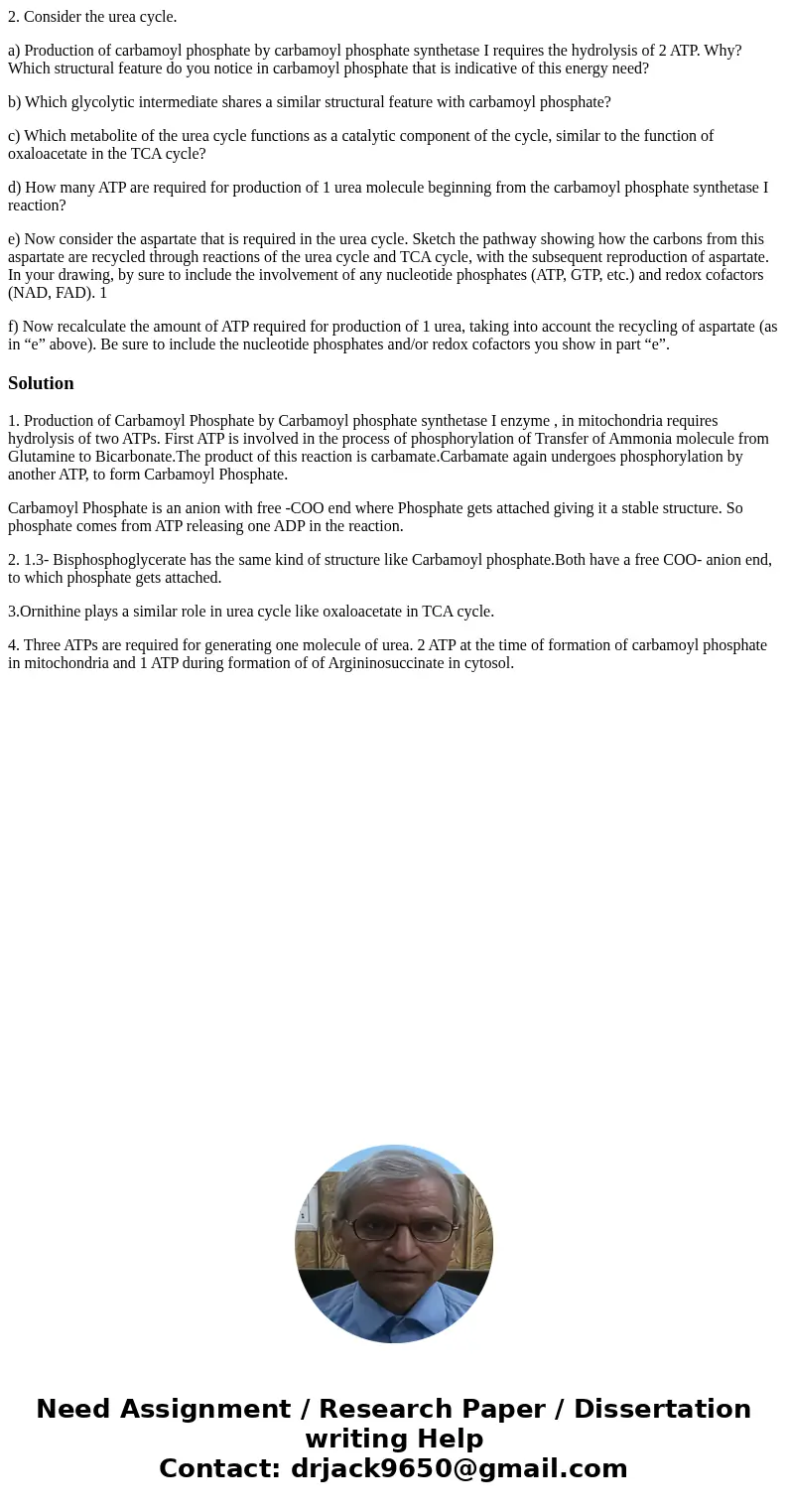2 Consider the urea cycle a Production of carbamoyl phosphat
2. Consider the urea cycle.
a) Production of carbamoyl phosphate by carbamoyl phosphate synthetase I requires the hydrolysis of 2 ATP. Why? Which structural feature do you notice in carbamoyl phosphate that is indicative of this energy need?
b) Which glycolytic intermediate shares a similar structural feature with carbamoyl phosphate?
c) Which metabolite of the urea cycle functions as a catalytic component of the cycle, similar to the function of oxaloacetate in the TCA cycle?
d) How many ATP are required for production of 1 urea molecule beginning from the carbamoyl phosphate synthetase I reaction?
e) Now consider the aspartate that is required in the urea cycle. Sketch the pathway showing how the carbons from this aspartate are recycled through reactions of the urea cycle and TCA cycle, with the subsequent reproduction of aspartate. In your drawing, by sure to include the involvement of any nucleotide phosphates (ATP, GTP, etc.) and redox cofactors (NAD, FAD). 1
f) Now recalculate the amount of ATP required for production of 1 urea, taking into account the recycling of aspartate (as in “e” above). Be sure to include the nucleotide phosphates and/or redox cofactors you show in part “e”.
Solution
1. Production of Carbamoyl Phosphate by Carbamoyl phosphate synthetase I enzyme , in mitochondria requires hydrolysis of two ATPs. First ATP is involved in the process of phosphorylation of Transfer of Ammonia molecule from Glutamine to Bicarbonate.The product of this reaction is carbamate.Carbamate again undergoes phosphorylation by another ATP, to form Carbamoyl Phosphate.
Carbamoyl Phosphate is an anion with free -COO end where Phosphate gets attached giving it a stable structure. So phosphate comes from ATP releasing one ADP in the reaction.
2. 1.3- Bisphosphoglycerate has the same kind of structure like Carbamoyl phosphate.Both have a free COO- anion end, to which phosphate gets attached.
3.Ornithine plays a similar role in urea cycle like oxaloacetate in TCA cycle.
4. Three ATPs are required for generating one molecule of urea. 2 ATP at the time of formation of carbamoyl phosphate in mitochondria and 1 ATP during formation of of Argininosuccinate in cytosol.

 Homework Sourse
Homework Sourse